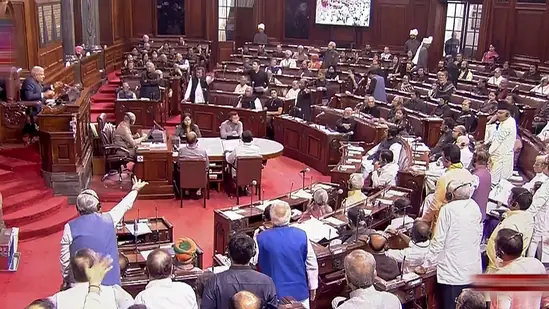





Copyright infringement not intended
Context: The Lok Sabha Speaker announced that he had accepted a no-confidence motion moved by the Opposition parties against the ruling Government.
Details
Process of No-Confidence Motion in Lok Sabha:
Significance of No-Confidence Motion
Conclusion
|
PRACTICE QUESTION Q. Consider the following statements in the context of a No-Confidence Motion; 1. Any member of the Lok Sabha can submit a No-Confidence Motion in writing to the Speaker of the Lok Sabha. 2. For the motion to succeed, it must be passed by a special majority of the total membership of the Lok Sabha. 3. If the No-Confidence Motion is passed, the Prime Minister and the entire Council of Ministers are required to resign. Which of the following Statement is/are correct? A) 1 and 2 only B) 2 and 3 only C) 1 and 3 only D) 1, 2 and 3 Answer: C Explanation: Statement 1 is correct: As per the parliamentary procedure in India, any member of the Lok Sabha can submit a No-Confidence Motion to the Speaker in writing. Statement 2 is incorrect: For the No-Confidence Motion to succeed, it must be passed by a simple majority of the total membership of the Lok Sabha. A simple majority means more members should vote in favour of the motion than against it. Statement 3 is correct: If the No-Confidence Motion is passed by a simple majority of the Lok Sabha, it indicates that the government has lost the confidence of the House. In such a scenario, the Prime Minister and the entire Council of Ministers are required to resign. |
https://indianexpress.com/article/explained/everyday-explainers/no-confidence-motion-8860985/










© 2025 iasgyan. All right reserved